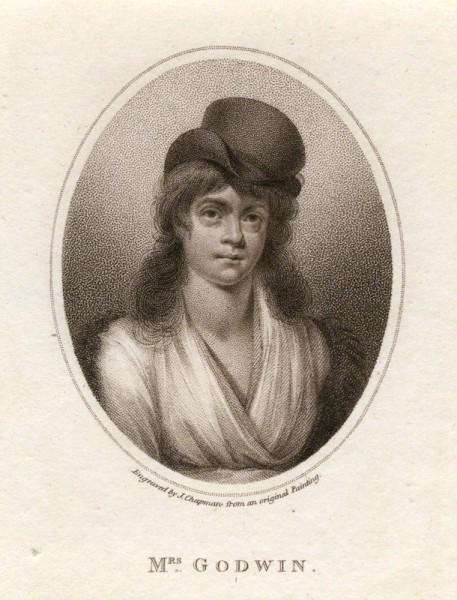“You may try, but you cannot imagine what it is to have a man’s force of genius in you, and to suffer the slavery of being a girl.” George Eliot, Daniel Deronda, 1876
There are two glass ceilings for female writers and artists, arranged one on top of the other, a crystal palace of prejudice and illusion. There’s the transparent political and economic one, the barrier to equality of status and pay.
The other, under that, or above, I can’t see that far, I don’t understand technical details ’cause I’m a girl, and the light refracts so prettily, I wonder if I should buy that pink hat, is a rose-pink coloured barrier to having your work taken seriously.
This one, the pink one, was smashed in the 19th century by the Brontë sisters and Marian Evans, but they knew they could only break through if their ideas were camouflaged under male names.
They were not worried about commercial failure, or shocking people; they were worried about not being taken seriously.
Currer, Ellis and Acton Bell, and George Eliot, would have sold their books under their own feminine names and been admired for their romance and intelligence, for the local colour and dialects of their novels, their compassion for underdogs and their understanding of children and servants, for provocative scandals and the delicacy of their sentiments and morals. Pink.
Compassion, but not passion; feelings but not reasons; intelligence but not intellect; morals but not politics; wit but not humour; nurturing not building; melodrama not abstract symbolism; social satire but not revolution.
Even today, as in her own time, there are readers who attribute the philosophical and scientific principles driving Mary Shelley’s Gothic fiction Frankenstein to her husband.
Writing under male names was not female writers’ modesty, it was a covert declaration of war: “J’accuse”.
 The 20th century’s rediscovered PINK through Elsa Schiaparelli’s use of textiles dyed in “Shocking Pink” in the 1930s . Image: Wikipedia
The 20th century’s rediscovered PINK through Elsa Schiaparelli’s use of textiles dyed in “Shocking Pink” in the 1930s . Image: Wikipedia
Readers still expect women to write pink books, and make pink films, and there’s an awful lot of those, and literary agents and publishers are looking for boy-blue to flag the earth-moving big ideas.
Pink. Tender as baby’s flesh, innocent as the blush on a maiden’s cheek, the scent of rose petals and the sweetness of strawberries with cream, a poetic dream of love, the silken negligée strewn on the candle-lit bed, the colour of a coquettish tongue, the suggestion of sex without the mess.
From the softest bloom of dawn to the blazing glory of sunset, pink is our rescue from darkness, the wistful yearning to touch something greater and better than ourselves, and nostalgia for the people we might have been if experience and temptation hadn’t got in the way. That shade of pink is the colour of creation.
There’s another shade of pink which still giggles and trills and simpers more tea, vicar? Don’t the children look sweet? Look at that baby! A posy for your wife. And it’s charitable, too, a badge of Empathy and Do-Gooding.
Oh, bring me a devil dressed in pink, quick.
Gentle, caring, feminine, innocuous, virginal – wait! Pink can be powerful, depending on the woman wearing it.

Martin van Meytens, Portrait of a young woman said to be Maria Theresa, Archduchess of Austria, later Holy Roman Empress and Queen of Hungary and Bohemia. She had to fight a major European War to win acceptance of her right to rule, as a woman, the hereditary Habsburg territories. Image: Wikipedia
I, declares the Female Author, might wear pink, look pink, have been born pink, but I write with blood and iron. Dressed in a pink dress, with a garland of pink roses in my hair, I wield a sceptre of fire and hold the scales of justice. I am a woman, but I have the heart and stomach of a writer.
The most successful tragedienne of the late 18th and early 19th centuries, the only actor of either sex who fused the two dominant cultural ideologies of the age, Neoclassicism and Romanticism, was rare in having her work taken seriously, but she herself was not. Though she was acknowledged by many to be a better actor than her male contemporaries, she was not given equal status to them.
And she was furious: “Perhaps in the next world women will be more valued than they are in this.” (Sarah Siddons.)
Soon after publication of the Bells’ first novels, and a decade later of George Eliot’s, everyone knew or at least suspected that the authors were female, just as Robert Galbraith’s cover was quickly blown in 2013. But the books had shouted so loud that they had already shaken the glass ceiling until it smashed.
END OF PART ONE


 Print of George Romney’s portrait of Sarah Siddons, 1783. Published in The Connoisseur magazine, ca. early 20th c. © Victoria and Albert Museum
Print of George Romney’s portrait of Sarah Siddons, 1783. Published in The Connoisseur magazine, ca. early 20th c. © Victoria and Albert Museum Mrs Siddons as The Tragic Muse, Melpomene, with the figures of Pity and Terror behind her, by Sir Joshua Reynolds, oil on canvas, 1784. Huntington Art Gallery, San Marino, California. Image: Wikipedia
Mrs Siddons as The Tragic Muse, Melpomene, with the figures of Pity and Terror behind her, by Sir Joshua Reynolds, oil on canvas, 1784. Huntington Art Gallery, San Marino, California. Image: Wikipedia


 Mrs Siddons as Mrs Haller by Thomas Lawrence, 1796-8 oil on canvas
Mrs Siddons as Mrs Haller by Thomas Lawrence, 1796-8 oil on canvas


 Sarah Siddons, oil on canvas c 1784, attributed to William Hamilton (or Thomas Beech).
Sarah Siddons, oil on canvas c 1784, attributed to William Hamilton (or Thomas Beech).